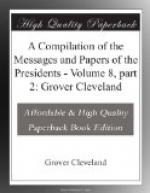(i) A vessel under way which is unable to get out of the way of an approaching vessel through being not under command or unable to maneuver as required by these rules shall on hearing the fog signal of an approaching vessel sound in answer four short blasts in succession.
Sailing vessels and boats of less than 20 tons gross tonnage shall not be obliged to give the above-mentioned signals, but if they do not they shall make some other efficient sound signal at intervals of not more than one minute.
SPEED OF SHIPS TO BE MODERATE IN FOG, ETC.
ART. 16. Every vessel shall in a
fog, mist, falling snow, or heavy rain
storms go at a moderate speed, having
careful regard to the existing
circumstances and conditions.
A steam vessel hearing, apparently forward of her beam, the fog signal of a vessel the position of which is not ascertained shall, so far as the circumstances of the case admit, stop her engines and then navigate with caution until danger of collision is over.
STEERING AND SAILING RULES.
PRELIMINARY.—RISK OF COLLISION.
Risk of collision can, when circumstances permit, be ascertained by carefully watching the compass bearing of an approaching vessel. If the bearing does not appreciably change, such risk should be deemed to exist.
ART. 17. When two sailing vessels
are approaching one another so as to
involve risk of collision, one of them
shall keep out of the way of the
other as follows, namely:
(a) A vessel which is running free
shall keep out of the way of a
vessel which is closehauled.
(b) A vessel which is closehauled
on the port tack shall keep out
of the way of a vessel which is closehauled
on the starboard tack.
(c) When both are running free
with the wind on different sides,
the vessel which has the wind on the port
side shall keep out of the way
of the other.
(d) When both are running free
with the wind on the same side,
the vessel which is to the windward shall
keep out of the way of the
vessel which is to leeward.
(e) A vessel which has the wind
aft shall keep out of the way of
the other vessel.
ART. 18. When two steam vessels are
meeting end on or nearly end on, so
as to involve risk of collision, each
shall alter her course to
starboard, so that each may pass on the
port side of the other.
This article only applies to cases where vessels are meeting end on or nearly end on in such a manner as to involve risk of collision, and does not apply to two vessels which must, if both keep on their respective courses, pass clear of each other.
The only cases to which it does apply are when each of the two vessels is end on or nearly




